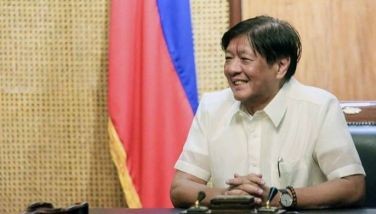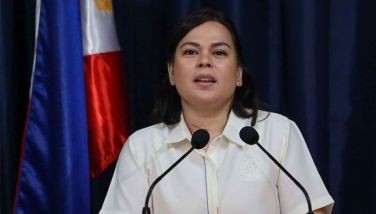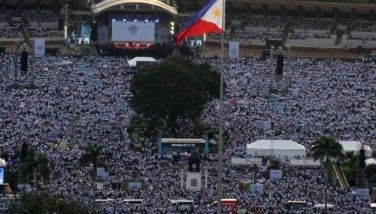Economic recovery of Mindanao hinges on restoring ‘social capital’
January 28, 2002 | 12:00am
Traditional approaches to formulating Mindanao’s socio-economic development program may no longer be effective, given its depleted ‘social capital.’
What is needed is a shift in policy perspectives when addressing Mindanao’s problems, according to Dr. Fermin Adriano, a political economist, who co-authored a document entitled, Peace and Reconstruction Imperatives for Mindanao’s Enhanced Development: An Agenda for 2001-2004.
He said the road map to Mindanao’s recovery should start by restoring its social capital or the relationship between and among peoples, and the structures nurturing it, resulting in social cohesion. The long years of recurring armed hostilities, Adriano stressed, have severely depleted Mindanao’s social capital.
Social capital also includes norms and values that bond communities together, as well as the bridges between communal groups or civil society and the state. Adriano noted that progressive countries are those that have a high social capital, which complements other forms of capital such as financial, human resources, natural resource base and technology.
Mindanao’s social capital, Adriano explained, has been eroded and weakened through decades of conflict, resulting in massive poverty and inequality, social exclusion, and indignity, particularly among the Muslims and lumads or indigenous peoples.
Adriano suggested that government interventions should thus be anchored on the development of social capital. Such interventions may comprise of extensive reconstruction activities; programs and projects that strengthen community institutions and coping mechanisms, and promote inter-faith and inter-ethnic understanding; and capability building initiatives among local government units to ensure effective governance.
Using social capital as a socio-economic development framework would require government and other stakeholders to change their ways of seeing and doing things, Adriano added.
For instance, government should reinforce relief and rehabilitation activities with peace and development initiatives at the community level. It should consider implementing a comprehensive program that includes economic, socio-cultural and political components. Institutional reforms should go beyond capacity building toward a combination of programs, policy modification, and innovative public-private/civil society partnership schemes.
Finally, government should now expand its intervention beyond high-intensity conflict areas because the problems are no longer isolated but island-wide, Adriano said.
What is needed is a shift in policy perspectives when addressing Mindanao’s problems, according to Dr. Fermin Adriano, a political economist, who co-authored a document entitled, Peace and Reconstruction Imperatives for Mindanao’s Enhanced Development: An Agenda for 2001-2004.
He said the road map to Mindanao’s recovery should start by restoring its social capital or the relationship between and among peoples, and the structures nurturing it, resulting in social cohesion. The long years of recurring armed hostilities, Adriano stressed, have severely depleted Mindanao’s social capital.
Social capital also includes norms and values that bond communities together, as well as the bridges between communal groups or civil society and the state. Adriano noted that progressive countries are those that have a high social capital, which complements other forms of capital such as financial, human resources, natural resource base and technology.
Mindanao’s social capital, Adriano explained, has been eroded and weakened through decades of conflict, resulting in massive poverty and inequality, social exclusion, and indignity, particularly among the Muslims and lumads or indigenous peoples.
Adriano suggested that government interventions should thus be anchored on the development of social capital. Such interventions may comprise of extensive reconstruction activities; programs and projects that strengthen community institutions and coping mechanisms, and promote inter-faith and inter-ethnic understanding; and capability building initiatives among local government units to ensure effective governance.
Using social capital as a socio-economic development framework would require government and other stakeholders to change their ways of seeing and doing things, Adriano added.
For instance, government should reinforce relief and rehabilitation activities with peace and development initiatives at the community level. It should consider implementing a comprehensive program that includes economic, socio-cultural and political components. Institutional reforms should go beyond capacity building toward a combination of programs, policy modification, and innovative public-private/civil society partnership schemes.
Finally, government should now expand its intervention beyond high-intensity conflict areas because the problems are no longer isolated but island-wide, Adriano said.
BrandSpace Articles
<
>
- Latest
- Trending
Trending
Latest
Trending
Latest
Recommended





























